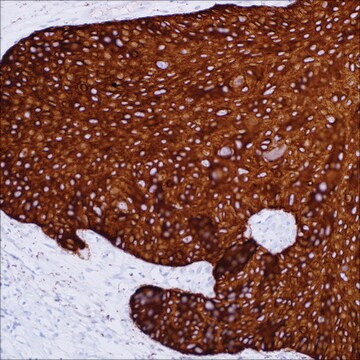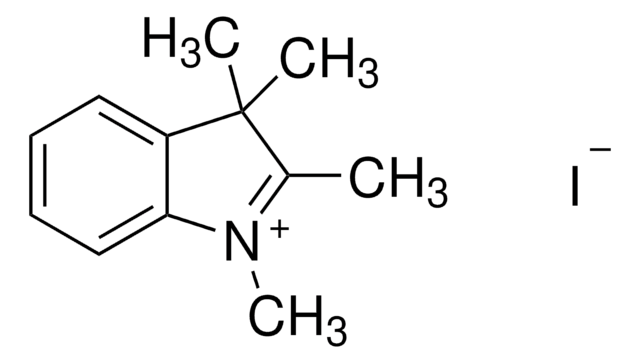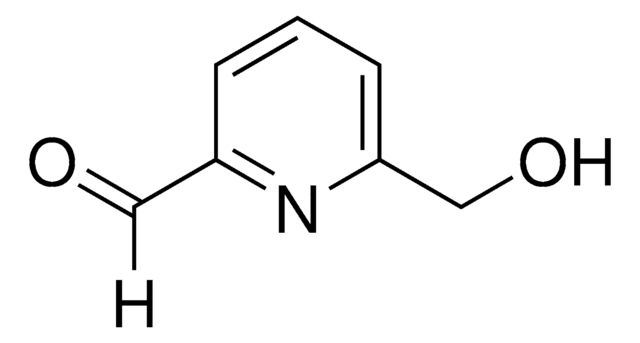All Photos(2)
About This Item
Empirical Formula (Hill Notation):
HCl
CAS Number:
Molecular Weight:
36.46
MDL number:
UNSPSC Code:
12352301
PubChem Substance ID:
NACRES:
NA.21
Recommended Products
form
liquid
Quality Level
concentration
3.80-4.40 M (by NaOH, titration)
4.0 M in dioxane
density
1.05 g/mL at 25 °C
SMILES string
Cl
InChI
1S/ClH/h1H
InChI key
VEXZGXHMUGYJMC-UHFFFAOYSA-N
Looking for similar products? Visit Product Comparison Guide
Related Categories
General description
Hydrogen chloride solution contains 4.0 M hydrogen chloride in 1,4-dioxane as the solvent. It is commonly used as a deprotection reagent during the deprotection of the tert-butoxycarbonyl (Boc) group of various amino acids and peptides. Additionally, it serves as a reagent in various organic synthesis reactions, including the synthesis of N-9-Fluorenylmethoxycarbonyl- (Fmoc) amino-acid chlorides.
Application
Hydrogen chloride solution (4.0 M in dioxane) can be used as:
- A reagent for the deprotection of the N-Boc protecting group from various heterocyclic derivatives.
- A reagent for the deprotection of polymer protecting groups. For instance, deprotection of benzyl ether-protected polymer.
- A polymerization initiator in combination with ZnCl2 in the synthesis of formyl terminated poly(ethyl vinyl ether) from ethyl vinyl ether (EVE).
Signal Word
Danger
Hazard Statements
Precautionary Statements
Hazard Classifications
Carc. 1B - Eye Irrit. 2 - Flam. Liq. 2 - Met. Corr. 1 - Skin Irrit. 2 - STOT SE 3
Target Organs
Respiratory system
Supplementary Hazards
Storage Class Code
3 - Flammable liquids
WGK
WGK 3
Flash Point(F)
62.6 °F - closed cup
Flash Point(C)
17 °C - closed cup
Choose from one of the most recent versions:
Already Own This Product?
Find documentation for the products that you have recently purchased in the Document Library.
Customers Also Viewed
Synthesis of Chitosan-graft-Poly (vinyl ether) as a Thermoresponsive Water-Soluble Chitosan
Namikoshi T, et al.
Journal of Fiber Science and Technology, 75(12), 193-199 (2019)
Z L Neumann et al.
Journal of veterinary internal medicine, 29(6), 1584-1594 (2015-10-02)
Canine osteosarcoma (OS) is an aggressive sarcoma characterized by pathologic skeletal resorption and pulmonary metastases. A number of negative prognostic factors, including bone alkaline phosphatase, have been identified in dogs with OS, but the underlying biologic factors responsible for such
Brian W Simons et al.
The Journal of pathology, 235(3), 478-489 (2014-10-29)
Inflammation is associated with several diseases of the prostate including benign enlargement and cancer, but a causal relationship has not been established. Our objective was to characterize the prostate inflammatory microenvironment after infection with a human prostate-derived bacterial strain and
Anne Bouchut et al.
PloS one, 10(3), e0117966-e0117966 (2015-03-19)
Lysine acetylation is a reversible post-translational modification (PTM) that has been detected on thousands of proteins in nearly all cellular compartments. The role of this widespread PTM has yet to be fully elucidated, but can impact protein localization, interactions, activity
Jingjing Cao et al.
Journal of virology, 89(5), 2777-2791 (2014-12-30)
Microtubule transport of circovirus from the periphery of the cell to the nucleus is essential for viral replication in early infection. How the microtubule is recruited to the viral cargo remains unclear. In this study, we observed that circovirus trafficking
Our team of scientists has experience in all areas of research including Life Science, Material Science, Chemical Synthesis, Chromatography, Analytical and many others.
Contact Technical Service







